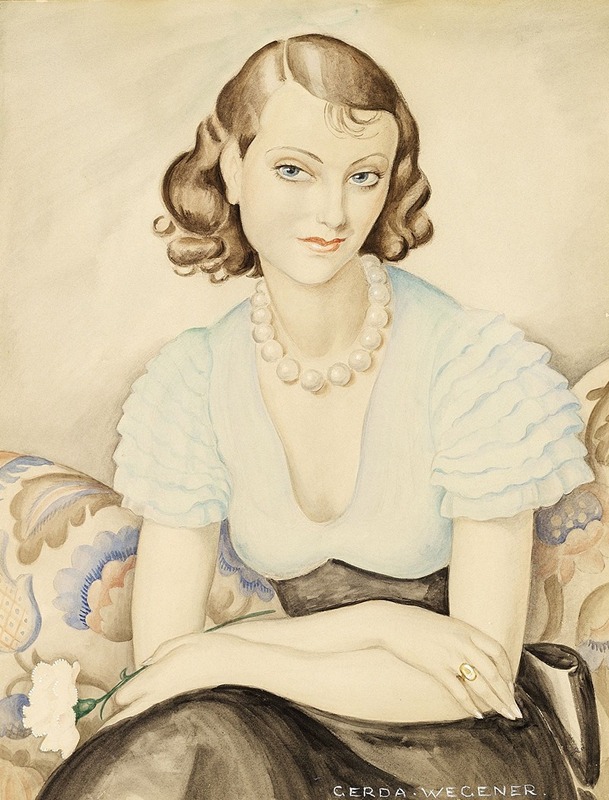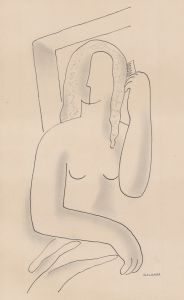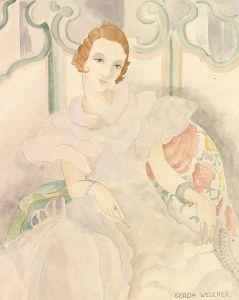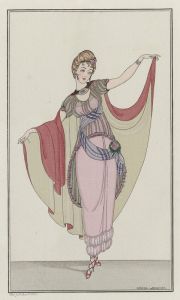
Portrait of a young woman
A hand-painted replica of Gerda Wegener’s masterpiece Portrait of a young woman, meticulously crafted by professional artists to capture the true essence of the original. Each piece is created with museum-quality canvas and rare mineral pigments, carefully painted by experienced artists with delicate brushstrokes and rich, layered colors to perfectly recreate the texture of the original artwork. Unlike machine-printed reproductions, this hand-painted version brings the painting to life, infused with the artist’s emotions and skill in every stroke. Whether for personal collection or home decoration, it instantly elevates the artistic atmosphere of any space.
Gerda Wegener was a Danish painter and illustrator known for her Art Deco style and her depictions of fashionable women and gender fluidity. One of her notable works is "Portrait of a Young Woman," which exemplifies her distinctive approach to portraiture and her ability to capture the elegance and complexity of her subjects.
Gerda Wegener was born on March 15, 1886, in the small town of Hammelev, Denmark. She moved to Copenhagen to study at the Royal Danish Academy of Fine Arts, where she met her future husband, Einar Wegener, who later became known as Lili Elbe, one of the first recipients of gender confirmation surgery. The couple moved to Paris in 1912, where Gerda's career flourished. Her work was well-received in the Parisian art scene, and she became known for her illustrations in fashion magazines and her portraits of women.
"Portrait of a Young Woman" is a testament to Wegener's skill in capturing the essence of her subjects with a blend of realism and stylization. The painting features a young woman, depicted with the elegance and poise characteristic of Wegener's work. Her use of color and attention to detail highlight the subject's features, clothing, and expression, creating a vivid and engaging image.
Wegener's art often explored themes of gender and identity, influenced by her relationship with Lili Elbe. Her portraits frequently challenged traditional gender norms and celebrated the fluidity of identity. This progressive approach to gender and identity is evident in many of her works, including "Portrait of a Young Woman," where the subject's expression and demeanor may suggest a narrative beyond the canvas.
The Art Deco movement, which emerged in the early 20th century, greatly influenced Wegener's style. Characterized by bold geometric patterns, vibrant colors, and a sense of luxury and modernity, Art Deco is reflected in Wegener's work through her use of decorative elements and her focus on the fashionable and contemporary aspects of her subjects.
Wegener's work, including "Portrait of a Young Woman," has gained renewed interest in recent years, partly due to the increased recognition of Lili Elbe's story and the broader exploration of gender identity in contemporary culture. Exhibitions of her work have been held in various galleries and museums, highlighting her contribution to early 20th-century art and her role in challenging societal norms through her art.
In summary, "Portrait of a Young Woman" by Gerda Wegener is a significant work that showcases her artistic talent and her engagement with themes of gender and identity. Through her distinctive style and innovative approach, Wegener has left a lasting impact on the art world, and her work continues to resonate with audiences today.


















